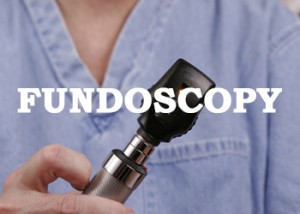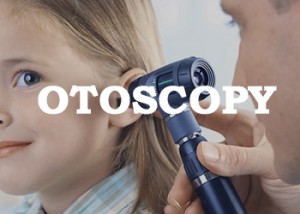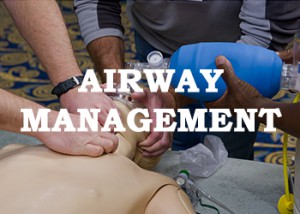Fundoscopy

Fundoscopy or ophthalmoscopy is a test that allows a health professional to see inside the fundus of the eye and other structures using an ophthalmoscope (or fundoscope). It is done as part of an eye examination and may be done as part of a routine physical examination. It is crucial in determining the health of the retina, optic disc, and vitreous humor. Although a dilated fundus examination is ideal, undilated examination is more convenient and is also helpful (albeit not as comprehensive), and it is the most common type in primary care. In our workshop, members are taught how to handle an opthalmoscope and the proper techniques involved in conducting a complete fundoscopic examination. They are also taught about some important common pathologies they are likely to come across
Otoscopy

Otoscopy is an examination that involves looking into the ear with an instrument called an otoscope (or auriscope). This is performed in order to examine the ‘external auditory canal’ – the tunnel that leads from the outer ear (pinna) to the eardrum. Inspection of the eardrum can also provide a lot of information about what’s happening within the middle ear – the space within the skull where the hearing and balance mechanisms are situated. In our workshop, members are taught how to handle an otoscope and the proper techniques involved in conducting a complete otoscopic examination. They are also taught about some important common pathologies and compares them to what you’ll observe in a normal ear canal and tympanic membrane.
Lumbar Puncture

A lumbar puncture (also called a spinal tap) is a procedure to collect and look at the fluid (cerebrospinal fluid, or CSF) surrounding the brain and spinal cord. During a lumbar puncture, a needle is carefully inserted into the subarachnoid space in the lumbar area. Samples of CSF are collected and used to test for conditions affecting the brain, spinal cord or other parts of the nervous system. Mainly used for diagnostic purposes, it may also be used therapeutically in some conditions. In this workshop, members will be taught how to locate the position from which the CSF needs to be withdrawn and how to insert the needle through the various layers. Along with that they shall also be taught how to prepare the area involved for the procedure. Models shall be used for the purpose of this workshop.
Airway Management

Airway management is a set of medical procedures performed to prevent airway obstruction and thus ensure an open path between a patient’s lungs and the atmosphere. In the initial assessment and management of any critically ill patient the ABC’s (Airway, Breathing and Circulation) are the first priority. Hypoxia will begin to cause irreversible brain injury within approximately 5 minutes and so airway management must precede any other treatment. The ability to establish and maintain an open airway in a patient, and the ability to ensure adequate ventilation and oxygenation of the patient, are therefore essential skills for physicians. The basic approach includes assuring airway patency, protection from aspiration, and providing adequate oxygenation and ventilation.